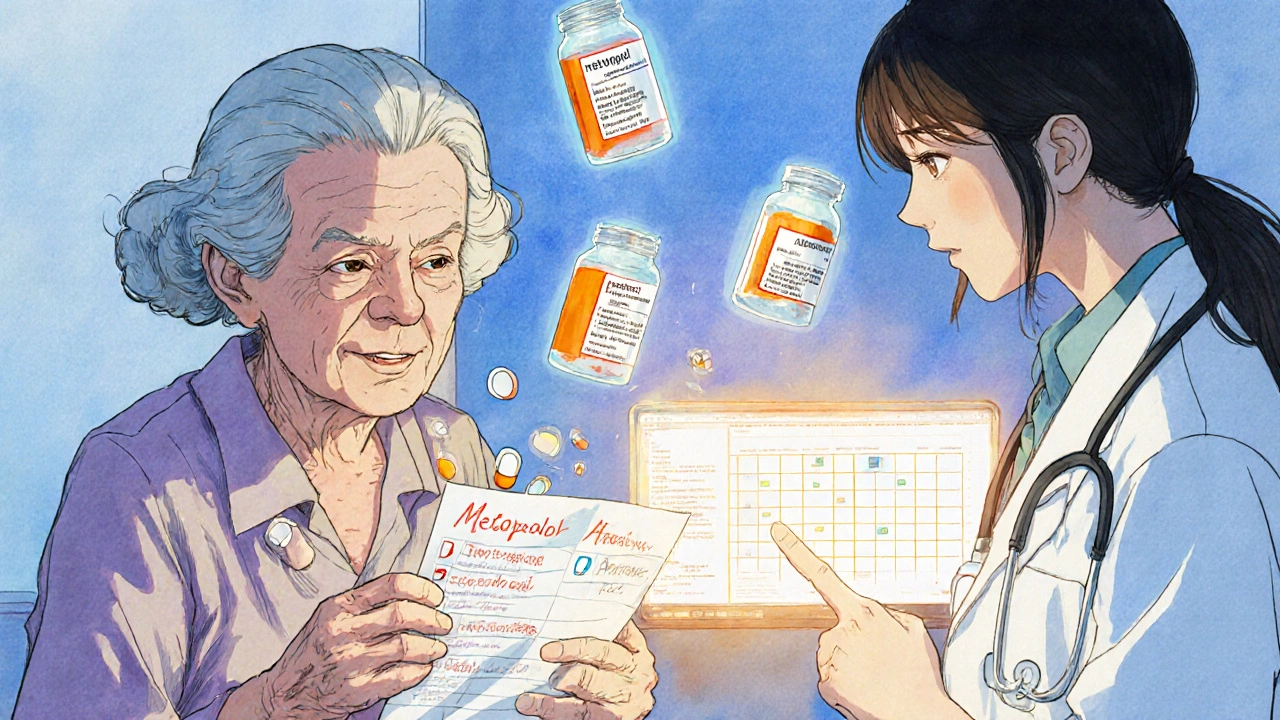Medication Reconciliation: What It Is and Why It Saves Lives
When you’re taking several medications, medication reconciliation, the process of comparing all your current drugs with what you should be taking. Also known as drug reconciliation, it’s not just paperwork—it’s a safety net that prevents deadly mistakes. Think about it: if your doctor changes your blood pressure pill but your pharmacist doesn’t know, or if you forget to mention you’re taking herbal supplements, you could end up in the ER. This isn’t rare. Studies show over 50% of patients have at least one error in their meds during hospital transitions.
Drug interactions, when two or more medications react in harmful ways are one of the biggest risks. Take MAOIs for depression—they can cause a deadly spike in blood pressure if mixed with certain foods or other drugs. Or anticholinergics like Benadryl, which can blur your memory and even speed up brain shrinkage in older adults. These aren’t hypotheticals. They show up in real cases every day. Medication errors, mistakes in prescribing, dispensing, or taking drugs happen at every step: at the doctor’s office, in the pharmacy, and at home. And they’re often avoidable—if someone takes the time to sit down and compare everything you’re using.
Pharmacy safety, the systems and checks that keep meds from harming patients relies heavily on this process. Hospitals do it when you’re admitted and discharged. But what about when you switch doctors, start a new supplement, or get a prescription filled at a different pharmacy? That’s where you have to step in. Write down every pill, patch, injection, and herbal tea. Bring it with you. Ask: "Is this still needed?" "Could this interact with something else?" "Is there a simpler way?" It’s not your job to be a pharmacist—but it is your job to be your own best advocate.
And it’s not just about pills. It’s about timing, dosages, and why you’re even taking them. One patient might be on eight drugs for heart, diabetes, and pain—but three of them are outdated or overlapping. Another might be taking a cholesterol drug that’s making their muscles ache, but no one ever asked. Patient safety, the broader goal of preventing harm during medical care starts with a clear list. That’s what medication reconciliation does. It turns confusion into clarity.
Below, you’ll find real stories and practical guides on the drugs people are taking—and the mistakes that can happen when no one checks. From benzodiazepine tapers to anticholinergic risks, from MAOIs to warfarin and beyond, these posts show you exactly what to watch for. You don’t need to be a doctor to keep yourself safe. You just need to know what questions to ask.
How to Avoid Duplicate Medications After Specialist Visits
Learn how seniors can avoid dangerous duplicate medications after specialist visits by keeping a full medication list, using one pharmacy, asking the right questions, and working with their primary care doctor to prevent harmful drug overlaps.
